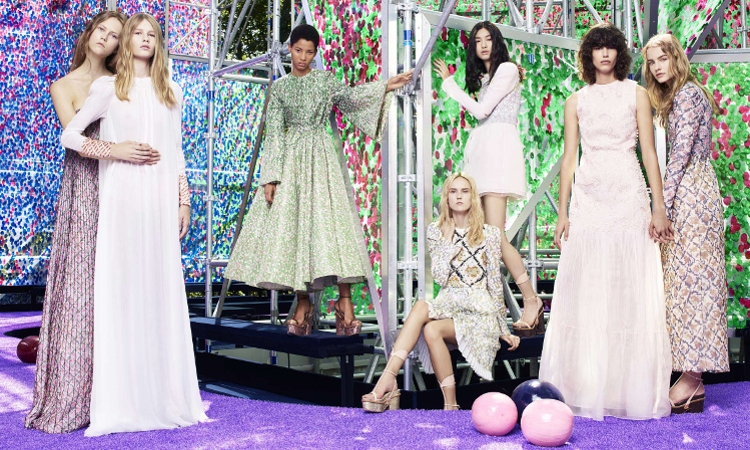In the Autumn-Winter Haute Couture collection, Raf Simons, Artistic Director of Christian Dior, looks to the Old Masters of Flemish painting and to the artisanal masters of haute couture to provide a synthesis of historical form, technique and artistic gesture to arrive at the point of today.
“I was intrigued by the idea of forbidden fruit, and what that meant now,” says Raf Simons. “The idea of purity and innocence versus luxury and decadence and how that is encapsulated by the idea of Dior’s garden – no longer a flower garden but a sexual one. The original inspiration came from the Flemish Masters and their approach to painting. It’s the tension between decrying luxury and the embracing of it; the mastery of craft and the beauty of artistic gesture; the reality and the unreality: you can’t have one without the other.”
A stratification and amalgamation of history, both in art and in fashion, exists throughout the collection, highlighting how the architecture and inspiration of one era is based on another; from the late Gothic period, via the Renaissance and the Baroque to the more recent masters of the nineteenth and twentieth centuries, each is featured in this broad sweep of history. Here, the Flemish and the French influences come together in the dramatic, almost ‘impasto’ gestures of drapery and the concentration on historical sleeves, to the Impressionist and Pointillist application of pattern – itself, frequently hand-painted on the materials of the collection itself or made from intricate, cut feathers. The ateliers of the Tailleur and the Flou unite to find both fluid and constructed forms together, where the intricate pleating systems of the flou in crepe de chine – usually reserved for dresses – become the expressive, inner linings of reversible capes and offer the choice of a public or a private pleasure for the wearer. The famous Dior manteaux show their similarities to the mantles of the late Middle Ages and to the gowns of the Belle Époque, with a vast and dramatic utilisation of silk taffeta in their construction. Meanwhile, the Dior jewellery is at its most luxurious and expressive this season, finding itself as a new form of ‘Cannage’ chainmail in gilets to be worn over garments and as heavy, dripping, ‘charmed’ chains to be draped over them.
“I wanted that feeling of the sensuous and luxurious to be implicit within the collection,” explains Raf Simons. “At the same time the innocent, gestural and personal should also be there – I have repeatedly been inspired by the gestural quality of Mr Dior’s work. The historical impact is pulled back into reality and this, for me, is what makes something modern. The venue, in many ways, is like a Modernist, Pointillist church; it’s the place where all of these concerns come together
